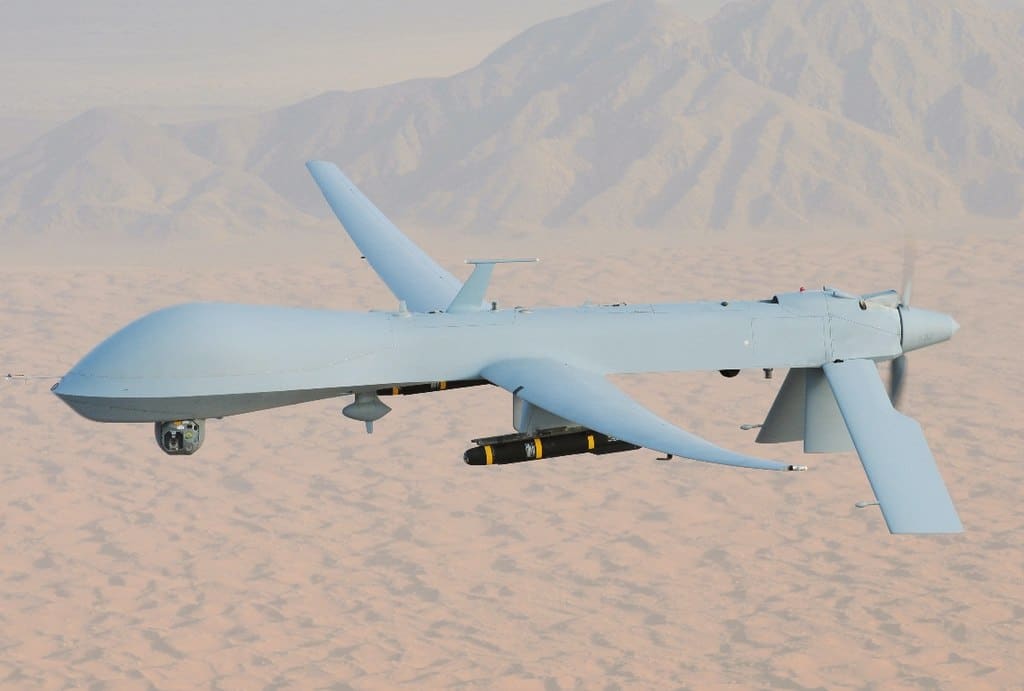Aerospace
India to buy 31 Predator drones from the US for $3.5 bn

India has successfully negotiated a big contract to buy 31 Predator drones estimated to cost around $3.5 billion or almost Rs 29,000 crore. During the Prime Minister’s current state visit to the United States from June 21 to 24.
A scientific analysis by the tri-services integrated defense staff, which found that India would need this many drones to effectively monitor its adversaries in both peacetime and combat situations, served as the foundation for the decision to acquire these unmanned aerial vehicles (UAVs).
India is currently developing 5 UAVs that it plans to use in the future.(Opens in a new browser tab)
The Predators, also known as the MQ-9 Reaper, can fly for up to 36 hours straight and are employed for targeted surveillance of any target or region of interest. Up to 31 Predator drones, which India will shortly purchase from the US, would be operated by the three services collectively.
According to the officer, these drones will be put together in India through a partnership between Indian businesses and drone manufacturer General Atomics, which will produce some components here. The officer said, “The current figure for this is 8 to 9 percent, but there is potential to raise it to 15 to 20 percent.”
In order to serve nations like Australia and Japan as well, General Atomics will establish a comprehensive and cost-effective maintenance, repair, and overhaul (MRO) facility in India. Within a period of one to two years the contract’s signing, India hopes to introduce the first 10 MQ-9B drones, depending on General Atomics’ production capacity. Every six months, remaining drones will be introduced in batches.
The MQ-9B Reaper drones have strike missiles that can completely and accurately destroy enemy targets, making them high-altitude, long-endurance drones. In addition, these drones will be used for long-range surveillance around the nation’s borders and in its marine regions. For long-range, precise strikes, the drones are fitted with air-to-ground missiles and smart bombs.

Aerospace
Boeing Transfers Rocket Stage to NASA, Paving Way for Human Moon Mission

Boeing has achieved a significant milestone by providing NASA with the second core stage of the Space Launch System (SLS) rocket.
This crucial component, crafted at NASA’s Michoud Assembly Facility (MAF), is set to propel the Artemis II crew into lunar orbit, marking humanity’s return to deep space after a 50-year hiatus.
The monumental Boeing-built rocket stage, the largest element of the Artemis II mission, will embark on a journey aboard the Pegasus barge, traveling 900 miles to NASA’s Kennedy Space Center.
Comparison of two legendary aircraft B777x vs B747 aircraft:Click here
Upon arrival, it will be meticulously integrated with other essential Artemis II components, including the upper stage, solid rocket boosters, and NASA’s Orion spacecraft within the iconic Vehicle Assembly Building. This intricate integration process is a vital step toward the eagerly anticipated Artemis II launch, slated for 2025.
“Boeing-built products helped land humankind on the moon in 1969, and we’re proud to continue that legacy through the Artemis generation,” remarked Dave Dutcher, vice president and program manager for Boeing’s SLS program. “Together, with NASA and our industry partners and suppliers, we are building the world’s most capable rocket and paving the way to deep space through America’s rocket factory in New Orleans.”
NASA, Lockheed Martin Reveal X-59 Quiet Supersonic Aircraft:Click here
The delivery of Core Stage 2 marks a significant achievement in the evolution of the SLS rocket. Towering over 200 feet and powered by four RS-25 engines, this core stage, coupled with two solid-fueled booster rockets, will generate a staggering 8.8 million pounds of thrust. This immense power is crucial to launching Artemis II and future missions into the vast expanse of space.
The SLS rocket stands unparalleled in its capability to transport both crew and substantial cargo to the moon and beyond in a single launch. Its extraordinary capacity will facilitate the delivery of human-rated spacecraft, habitats, and scientific missions to destinations including the moon and Mars, ushering in a new era of space exploration.
-

 Travel1 week ago
Travel1 week agoAir India to Expand US Operations with Three New Routes After a Decade
-

 Travel2 weeks ago
Travel2 weeks agoWhy We Should Avoid These Stamps in a Passport
-

 Airlines1 month ago
Airlines1 month agoInvestigations Reveal Fake Chinese Titanium in Boeing and Airbus Jets
-

 Tech4 weeks ago
Tech4 weeks agoChina’s CATL Plans 1,800-Mile Electric Plane Launch by 2027
-

 Airport3 days ago
Airport3 days agoTop 10 Largest Airports in the World by Size
-

 Aerospace4 weeks ago
Aerospace4 weeks agoChina’s Fighter Jets Turn Wings into Autonomous Drones
-

 Airlines4 days ago
Airlines4 days agoAir India Rolls Out A350s for Delhi-New York JFK and Newark Routes
-

 Defence3 weeks ago
Defence3 weeks agoBoeing Enhances Chinook with New Engines and Block II Upgrades at $96 Million







